By: Alyssa Hamm
These days, anyone can offer digital products. However, it’s important to remember how audience extension through a DSP can set you apart. As always, everything starts with a good sales process and a solid needs assessment with the advertiser. (For tips on how to set yourself apart and not get cancelled during the sales process, check our our Q3 Rev Up Revenue webinar!)
The needs assessment is going to be the driver of your future success with the advertiser. Walking into a meeting and automatically pitching what you are selling that day can be a good way to get quick sales, but it’s also a way to ensure a trickier renewal process. If, instead, we enter an advertiser conversation with a “listening and learning” mentality, we will not only make better decisions with respect to our advertiser, but we are able to listen for opportunities to offer increased services with our partnership.
The main benefit to having an audience extension offering through a DSP is being able to say “yes” more often when an advertiser asks about targeting or specific products. With your owned & operated site and the DSP (along with the myriad other solutions in your arsenal), you can act as a full-service agency for your advertisers. When you listen to needs, determine KPIs, educate, and set expectations to build your media plan, you set yourself apart from other “local agencies” and become the go-to resource in town.
Knowing that all good partnerships start with a listening approach and a problem-solving mentality, we wanted to ensure you know the basic product as well. Below is an overview of the DSP and the corresponding links to the resource library, where you can find a deep dive into the DSP product or feature. Keep in mind targeting (except for hyperlocal, which is exclusive to mobile/tablet) can be run across any device and ad format, so there are thousands of ways to build out your campaign. It is up to you to custom build what will be best for a client and their business/goals.
Devices
- Desktop
- Mobile
- Tablet
- Connected TV (CTV): Smart TVs and devices used to connect the TV to the internet such as connected devices (Roku, AmazonFire, Chromecast), and Gaming Consoles.
Ad Formats
- Display: Standard display and rich media.
- Video: Traditional and CTV placements. Pre, mid or post role plus in-banner, in-feed, and interstital.
- Audio: Placements including satellite radio, streaming music, and podcasts.
- Native: Ads that dynamically match the look and feel of the media format in which they appear.
Targeting
- Run of Network: Reach new audiences and scale based on performance using optimization tools and KPI benchmarks.
- Audience: Reach audiences based on demographics or behaviors (including intent, interest, or location).
- Contextual: Reach an audience based on the context of the webpage being consumed.
- Hyperlocal: Reach mobile users using lat/long coordinates to target physical locations.
- Retargeting: Remarket to users who previously visited your advertiser’s web properties.
- Private Marketplaces: Tap into over 1,000 pre-negotiated deals or work with Basis to create your own.


